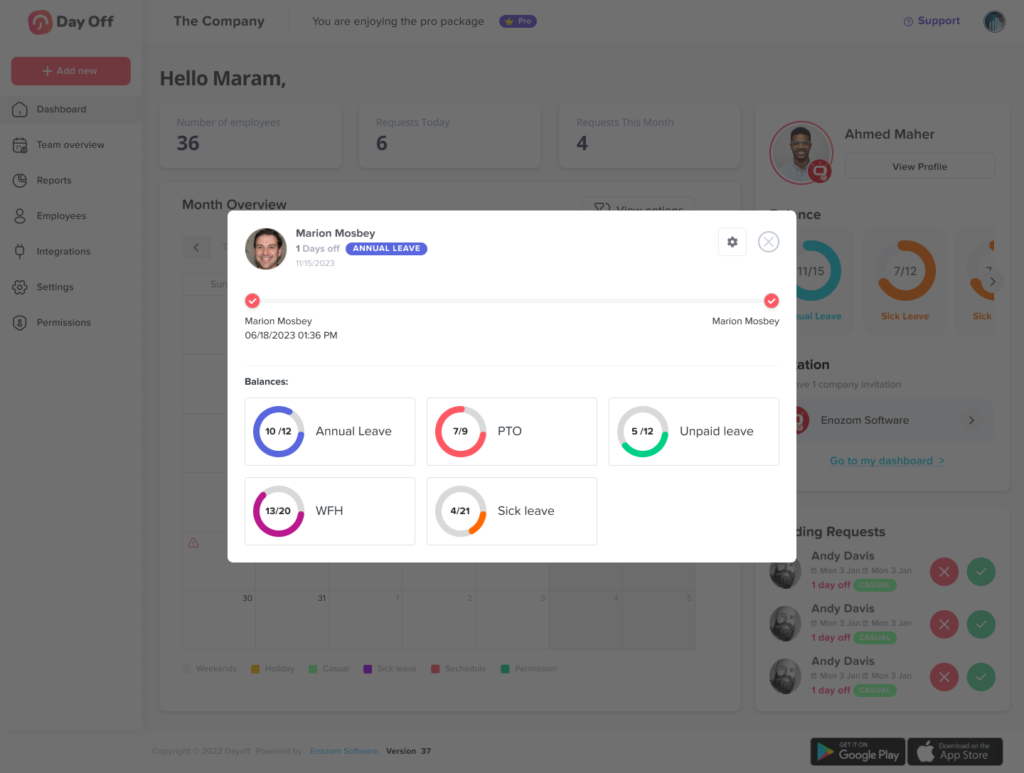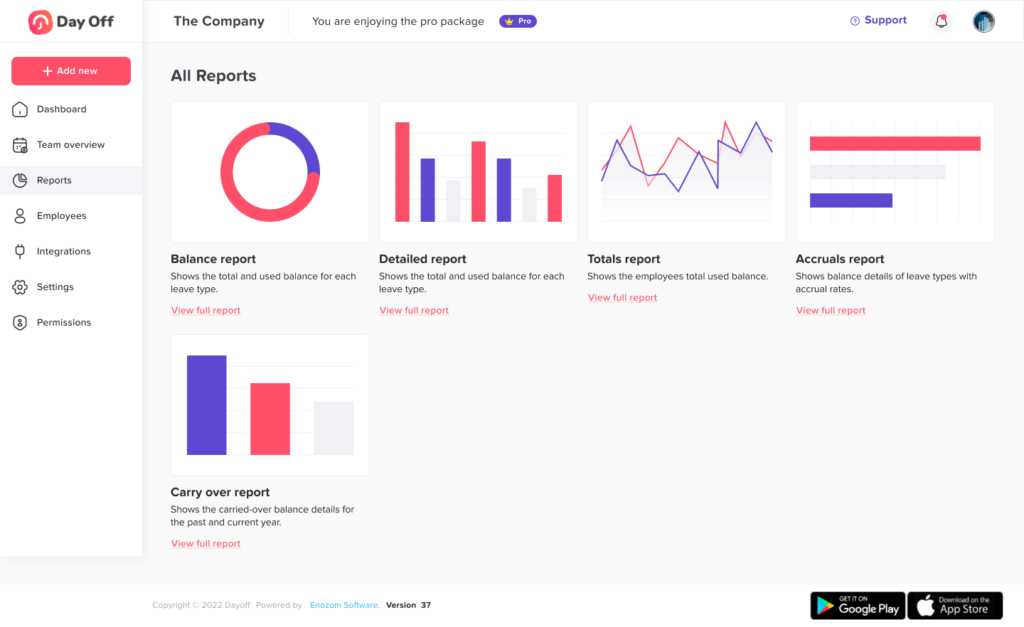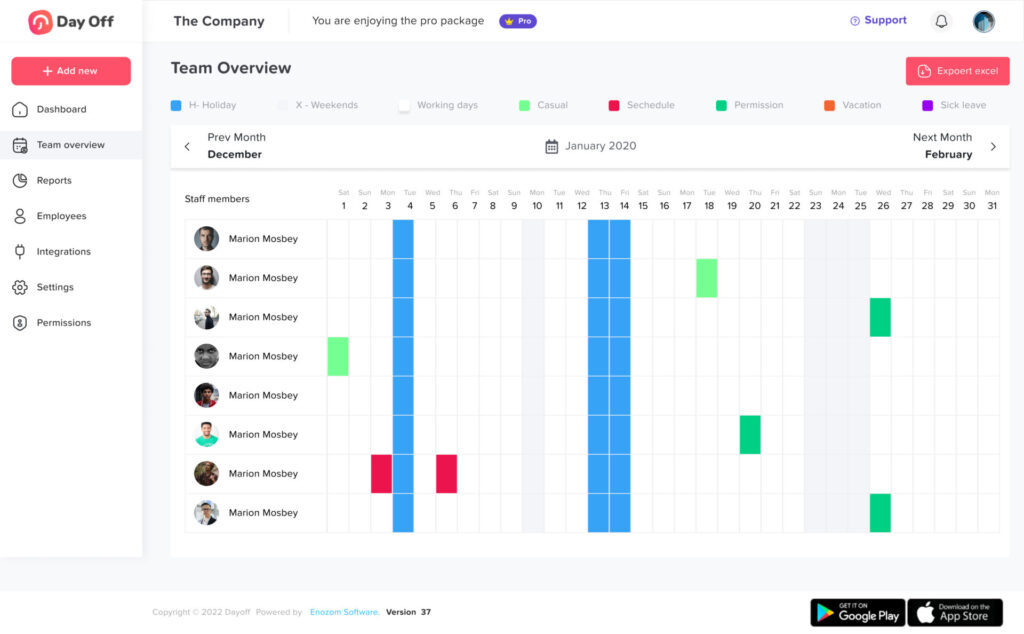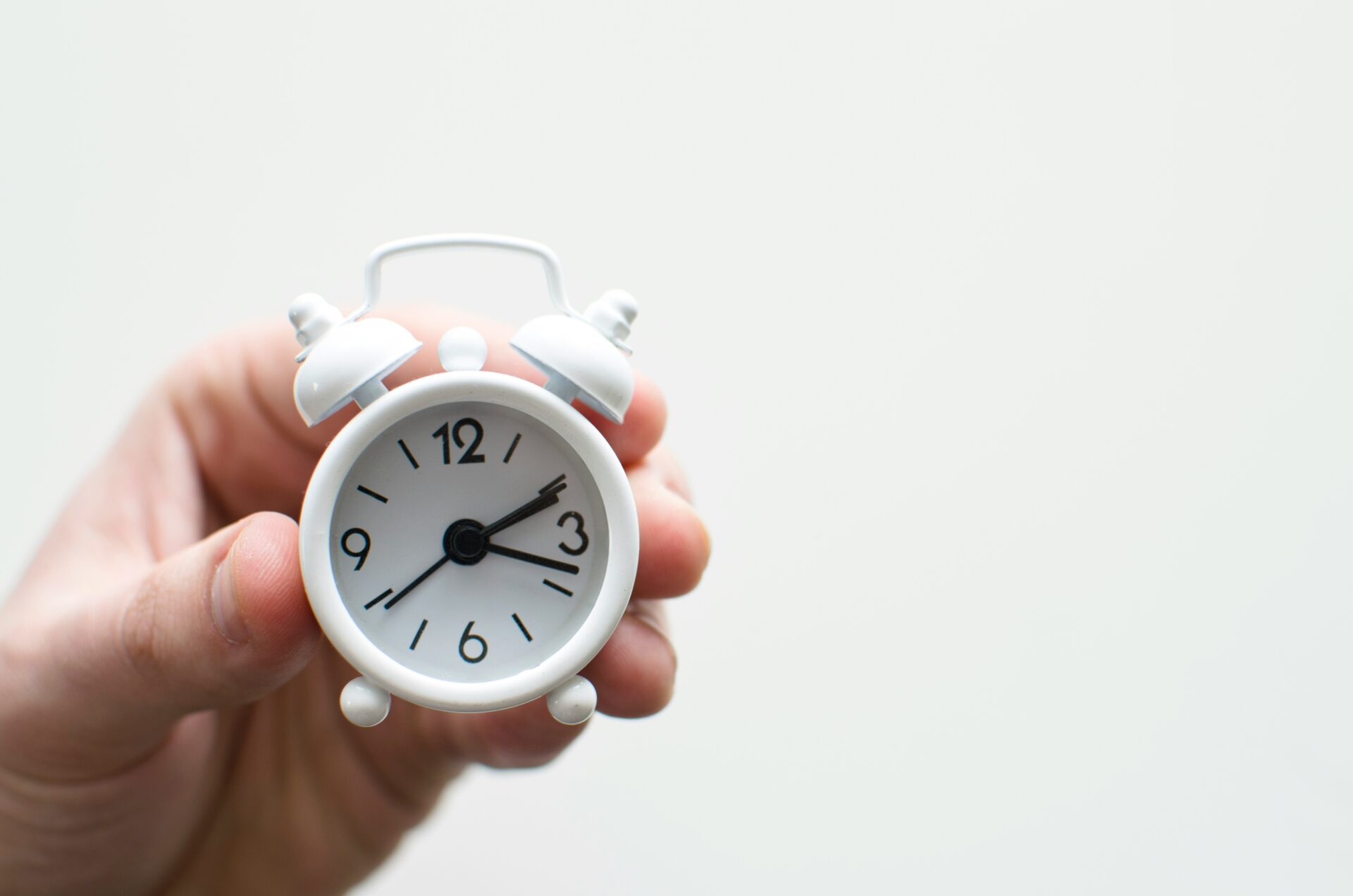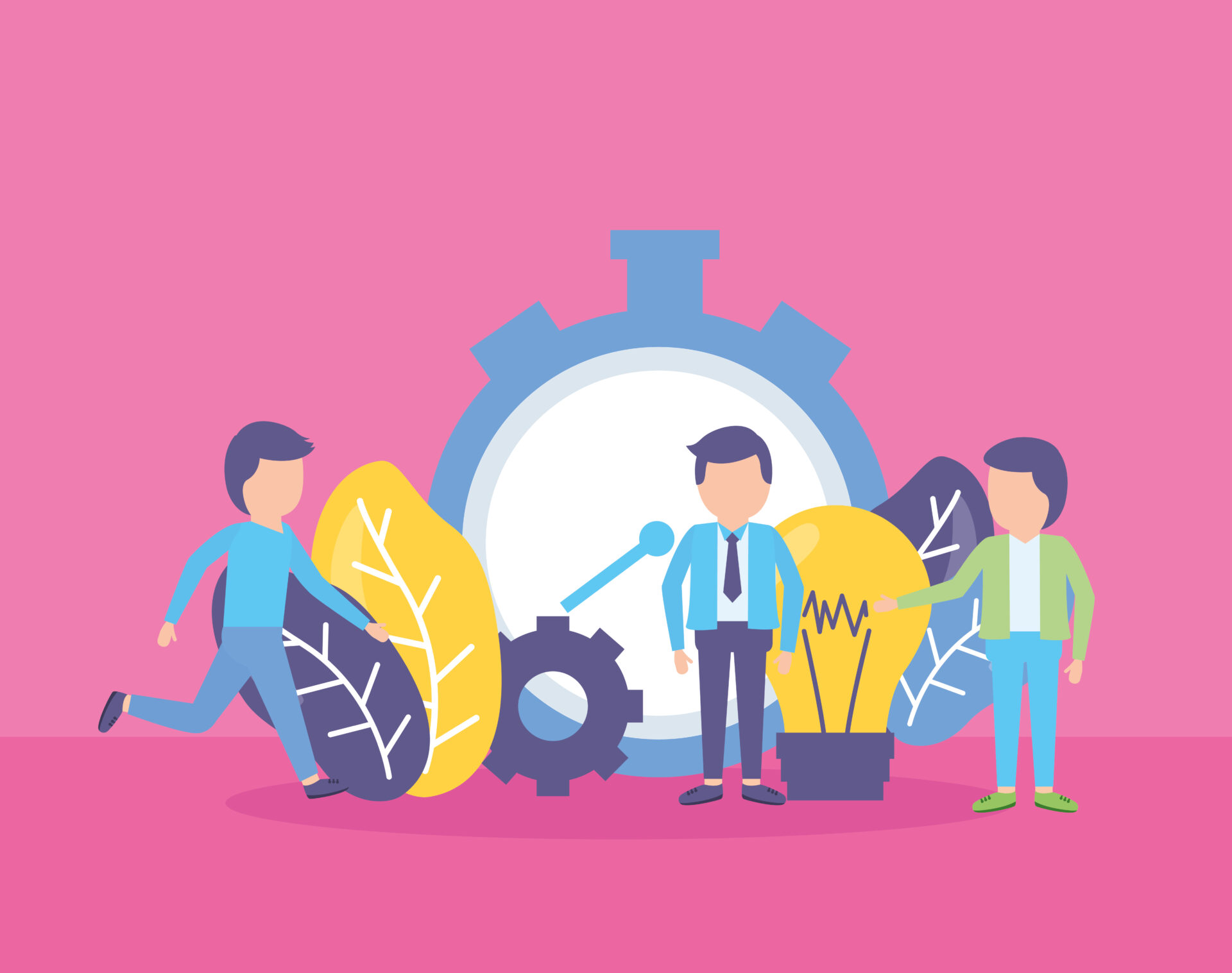The shift towards remote work, accelerated by the global events of the past few years, continues to evolve and solidify its place in the modern workplace. This transformation has not only changed where we work but also how we work, prompting a reevaluation of work-life balance, productivity, and organizational culture. Crucially, it has also reshaped time-off practices: companies are modernizing PTO policies for flexibility (e.g., clearer accruals, rollover options, and truly disconnecting during leave), adopting transparent PTO tracking tools, and normalizing regular time away to prevent burnout. Below, we explore the most significant benefits of remote work and how these shifts, including healthier PTO habits, are shaping industries, employee satisfaction, and business outcomes.
Enhanced Work-Life Balance
One of the most lauded benefits of remote work is the enhanced work-life balance it offers. Without the need to commute, employees can save time and reduce stress, allocating those extra hours to personal pursuits, family time, or rest. This shift has led to a more satisfied and well-rounded workforce, with employees reporting higher levels of happiness and lower levels of burnout.
Increased Productivity
Contrary to initial concerns, remote work has proven to boost productivity. With the ability to design their own workspaces and work during hours when they feel most productive, many employees have reported a significant increase in their output. Companies have noticed this trend, with several studies confirming that remote workers often outperform their in-office counterparts in terms of productivity.
Access to a Global Talent Pool
Remote work has demolished geographical barriers, enabling organizations to tap into a global talent pool. This broadened reach has allowed companies to find the best fit for their needs, regardless of location, leading to more diverse and skilled workforces. Moreover, it has opened up opportunities for individuals in remote or underserved regions to participate in the global economy.
Cost Savings
Both employers and employees benefit from the cost savings associated with remote work. Companies can reduce or eliminate expenses related to physical office spaces, such as rent, utilities, and maintenance. Employees save on commuting costs, work attire, and often on food, as they can more easily prepare meals at home. These savings can contribute to better financial health for employees and increased profitability for businesses.
Reduced Carbon Footprint
The environmental impact of remote work cannot be overstated. With fewer people commuting, there’s a significant reduction in carbon emissions, contributing to efforts against climate change. Additionally, the decreased need for large office spaces can lead to lower energy consumption, further enhancing the environmental benefits of remote work.
Flexibility and Autonomy
Remote work offers unparalleled flexibility, allowing employees to manage their work in a way that fits their lifestyle and preferences. This autonomy not only boosts morale but also encourages a culture of trust and accountability. Employees are judged on their output and performance rather than their presence in an office, shifting the focus to results over traditional measures of productivity.
Enhanced Inclusivity
The flexibility of remote work also supports a more inclusive work environment. It makes employment more accessible for people with disabilities, caregivers, and those with other commitments that make traditional office work challenging. By accommodating different needs and lifestyles, remote work promotes diversity and inclusivity within the workforce.
Focus on Mental Health
The rise of remote work has brought increased attention to the importance of mental health. Companies have become more proactive in offering support and resources to ensure the well-being of their employees. The ability to work from home can reduce stress and provide a safer space for those dealing with mental health issues, contributing to overall employee wellness.
Tips for an Employer: How to Deal with Employees Working Remotely?
Dealing with a remote workforce presents unique challenges and opportunities for employers. Effective management of remote employees requires a shift in traditional supervisory methods, embracing technology, and fostering a culture of trust and accountability. Here are strategies for employers to effectively manage and support their remote workers:
Establish Clear Communication Channels
- Utilize Various Tools: Leverage communication tools such as Slack, Microsoft Teams, Zoom, and email to keep in touch with your team. Choose platforms that best suit your team’s needs and ensure everyone is comfortable using them.
- Set Communication Norms: Establish guidelines for communication, such as response times, preferred tools for different types of communication, and regular check-in schedules.
Promote a Culture of Trust
- Focus on Output: Shift the focus from hours worked to tasks completed and goals achieved. Evaluate performance based on results rather than time spent online.
- Trust, Don’t Micromanage: Encourage autonomy and trust your employees to manage their workload effectively. Avoid micromanaging, as it can diminish morale and productivity.
Offer Flexibility While Setting Expectations
- Flexible Schedules: Allow employees to work during their most productive hours but set core hours when everyone must be available for meetings and collaboration.
- Clear Expectations: Clearly outline job responsibilities, project deadlines, and performance metrics. Ensure that every team member understands what is expected of them.
Foster Team Connection and Culture
- Regular Check-Ins: Schedule regular one-on-one meetings with team members to discuss progress, address concerns, and offer support.
- Team Building Activities: Organize virtual team-building activities to strengthen relationships and promote a sense of belonging.
- Celebrate Achievements: Recognize and celebrate milestones and achievements to boost morale and encourage a positive team culture.
Support Employee Well-being
- Encourage Breaks: Remind employees to take regular breaks to prevent burnout. Encourage a healthy work-life balance.
- Provide Resources: Offer resources for mental health and stress management, such as access to wellness programs or mental health days.
Invest in Technology and Infrastructure
- Provide Necessary Tools: Ensure employees have access to the necessary technology and software to perform their tasks efficiently.
- Security Measures: Implement robust security protocols to protect company data, including VPNs, secure file-sharing platforms, and regular cybersecurity training.
Encourage Continuous Learning and Development
- Professional Growth: Offer opportunities for professional development, such as online courses, webinars, and virtual conferences.
- Feedback Loop: Create a continuous feedback loop where employees can share their insights, suggestions, and concerns about remote work processes and policies.
Navigate Time Zone Differences
- Global Scheduling: Be mindful of time zone differences when scheduling meetings and deadlines. Use scheduling tools that can accommodate time zone overlays for easier planning.
- Asynchronous Work: Promote asynchronous work methods where possible, allowing employees to contribute according to their own schedules without the need for real-time communication.
How can Employers Track PTO for Employees Working Remotely?
Managing Paid Time Off (PTO) for remote employees requires a thoughtful approach that respects the unique dynamics of remote work while ensuring fairness and transparency across the organization. Here are strategies to effectively manage PTO for remote workers:
Establish Clear PTO Policies
- Comprehensive Guidelines: Develop clear, comprehensive PTO policies that address eligibility, accrual rates, carryover policies, and any state or country-specific regulations.
- Remote-Specific Considerations: Include guidelines specific to remote work, such as how to handle time zone differences and the process for requesting PTO to ensure coverage and minimal disruption.
Utilize PTO Management Software
- Centralized Tracking: Implement a PTO management system that allows both employees and managers to track PTO balances, submit requests, and approve time off seamlessly. Like ” Day Off Leave Tracker ” This ensures transparency and ease of access for all team members, regardless of location.
- Integration with Work Tools: Choose software that integrates with your organization’s calendar and scheduling tools to automatically reflect approved time off, making it visible to the entire team.
Encourage Advance Planning
- Request Notice: Encourage employees to request time off well in advance, especially for extended absences, to allow for adequate planning and coverage.
- Team Coordination: Promote coordination among team members to ensure that critical tasks are covered during an employee’s absence, minimizing workflow disruptions.
Foster a Culture That Values Time Off
- Lead by Example: Management should lead by example by taking their own PTO and openly discussing it, reinforcing the importance of rest and disconnection.
- Discourage Burnout: Actively discourage a culture of overworking and highlight the importance of using PTO for mental health, well-being, and maintaining productivity.
Communicate Expectations Clearly
- Work Coverage: Clearly communicate expectations regarding work coverage during absences, including any necessary handovers or briefings before taking time off.
- Availability: Set clear guidelines about the expected level of availability, if any, during PTO. Generally, employees should be encouraged to fully disconnect.
Review and Adapt Policies Regularly
- Feedback Loop: Create mechanisms for feedback on the PTO policy from remote employees to understand their needs and any challenges faced.
- Policy Updates: Regularly review and update PTO policies to reflect changes in workforce dynamics, legal requirements, and best practices in remote work management.
Address Burnout Proactively
- Monitor Patterns: Keep an eye on PTO usage patterns and check in with employees who are not taking enough time off, as this may be a sign of burnout.
- Well-being Check-ins: Incorporate well-being discussions in regular check-ins, encouraging employees to use their PTO for rest and rejuvenation.
Managing a remote workforce requires adaptability, open communication, and a supportive culture. By implementing these strategies, employers can ensure their remote teams are engaged, productive, and satisfied with their work environment. Embracing the benefits and addressing the challenges of remote work can lead to a more resilient and flexible organization.
Frequently Asked Questions (FAQ) About Remote Work
What are the main challenges of managing a remote team?
Managing remote teams comes with both opportunities and challenges. While remote work offers flexibility and global hiring potential, it can also create communication gaps, time zone conflicts, and difficulty maintaining company culture.
To overcome these challenges, leaders should use digital tools like Slack, Microsoft Teams, or Notion to streamline communication, and establish clear workflows and expectations.
Building trust, structure, and consistent communication are the cornerstones of successful remote team management.
How can employers maintain company culture in a remote environment?
A thriving company culture doesn’t disappear when the office goes virtual, it just evolves.
Employers can maintain culture by creating intentional moments of connection, such as virtual coffee breaks, team recognition events, and open forums for discussion.
Transparency, inclusivity, and consistent communication should guide every interaction. When employees feel connected and valued, culture flourishes regardless of physical distance.
Are remote employees as productive as those in the office?
Yes, and in many cases, even more productive. Studies show that remote employees often outperform their in-office counterparts due to fewer distractions, flexible work hours, and personalized environments.
The key to sustaining productivity is balance, clear objectives, performance metrics, and trust-based leadership. When employees are empowered and supported, their output speaks for itself.
How can organizations ensure accountability in remote teams?
Accountability thrives on clarity, not control.
Employers can create a culture of accountability by setting clear goals, measurable deliverables, and transparent timelines. Using project management tools like Asana or ClickUp allows teams to track progress without micromanagement.
Performance should be evaluated on outcomes and results, ensuring fairness and trust across distributed teams.
What tools are essential for effective remote work?
The right technology stack keeps remote teams connected, efficient, and secure.
Recommended tools include:
-
Communication: Slack, Zoom, Microsoft Teams
-
Project Management: Trello, Asana, Monday.com
-
File Collaboration: Google Workspace, Notion, Dropbox
-
PTO Tracking: Day Off Leave Tracker, Timetastic, BambooHR
-
Security: VPNs, password managers, and multi-factor authentication
Having a unified system enhances workflow visibility and ensures smooth collaboration across time zones.
How can managers build trust with remote employees?
Trust is the foundation of remote work success. Managers can build it by focusing on outcomes rather than monitoring activity.
Set clear expectations, recognize achievements, and provide constructive feedback regularly. Encourage autonomy while remaining available for support.
When employees feel trusted, they perform with greater confidence, loyalty, and creativity, key components of a strong remote culture.
How can remote teams stay connected and engaged?
Engagement is the heartbeat of remote work. Teams can stay connected through:
-
Regular team check-ins and virtual stand-ups.
-
Informal chat spaces for non-work conversations.
-
Online team-building activities and recognition programs.
-
Transparent updates on company goals and progress.
Social connection builds trust, motivation, and belonging, even in a fully remote workplace.
How can employers prevent burnout in remote employees?
Burnout prevention starts with boundaries and balance. Employers should:
-
Encourage employees to take regular breaks and use their PTO.
-
Avoid scheduling excessive meetings.
-
Offer mental health resources and wellness programs.
-
Respect offline hours and promote flexible scheduling.
Leaders who prioritize rest and well-being create a resilient, long-term workforce.
What’s the best way to measure performance in remote work?
The most effective performance measurement in remote settings is outcome-based, not time-based.
Focus on results, quality, and collaboration rather than screen time or availability.
Regular feedback sessions, performance reviews, and goal tracking help align individual efforts with company objectives, ensuring everyone stays motivated and accountable.
How can organizations support remote employee development and growth?
Professional growth keeps remote employees engaged and loyal.
Companies should invest in:
-
Online learning platforms (LinkedIn Learning, Coursera, Udemy).
-
Virtual mentorship programs.
-
Regular skill development workshops and webinars.
-
Career path discussions and promotion opportunities.
Encouraging continuous learning fosters innovation and strengthens employee retention in remote environments.
How do companies handle time zone differences effectively?
Time zone diversity can be a strength if managed thoughtfully.
Companies should define core overlap hours for collaboration while encouraging asynchronous communication for flexible work.
Shared calendars, time zone converters, and recorded meetings ensure inclusion and prevent scheduling fatigue.
A “follow-the-sun” workflow can increase productivity across global teams.
What are the best practices for onboarding remote employees?
Remote onboarding should be structured, supportive, and engaging.
Provide new hires with access to all essential tools, introduce them to team members, and assign mentors for guidance.
Regular check-ins during the first few weeks build confidence and belonging.
A smooth onboarding experience sets the tone for long-term engagement and success.
How can employers maintain data security with a remote workforce?
Cybersecurity is critical in remote and hybrid models.
Employers should implement:
-
Secure VPNs and encrypted file-sharing systems.
-
Multi-factor authentication and strong password policies.
-
Regular security training and awareness campaigns.
-
Device management and restricted access protocols.
Data security builds trust and ensures compliance across remote environments.
How should companies handle communication overload?
Too many notifications and meetings can hurt productivity.
To manage digital fatigue, companies should:
-
Set communication norms for tools (e.g., email for formal updates, Slack for quick questions).
-
Encourage asynchronous updates.
-
Implement “no-meeting” blocks for focused work.
-
Use dashboards for transparency instead of endless check-ins.
Efficient communication means less noise and more clarity.
How can remote work improve inclusivity and diversity?
Remote work breaks down barriers to employment by opening opportunities to diverse talent across different geographies, backgrounds, and lifestyles.
It benefits people with disabilities, caregivers, and those in regions with limited job access.
By focusing on skills and results rather than physical presence, organizations create inclusive, equitable workforces that reflect global diversity.
How can employers encourage employees to take PTO?
Encouraging employees to use their paid time off (PTO) helps prevent burnout and increases satisfaction.
Employers can:
-
Lead by example by taking their own PTO.
-
Use tools like Day Off Leave Tracker to make PTO requests simple and transparent.
-
Recognize the importance of rest as part of overall performance.
When time off is normalized and celebrated, productivity and morale improve across the team.
What role does mental health play in remote work success?
Mental health is the foundation of sustainable productivity.
Employers should integrate mental wellness programs, counseling support, and flexible schedules to help employees maintain balance.
Open communication and empathy from leadership can transform workplace culture and reduce stress.
A company that prioritizes mental health fosters happier, more loyal employees.
How can employees stay motivated when working remotely?
Motivation comes from purpose and connection. Remote workers can stay inspired by setting daily goals, creating structured routines, and maintaining boundaries.
Managers should recognize achievements, provide feedback, and ensure every team member feels part of the bigger mission.
Social connection, even through short virtual huddles, keeps morale high and teamwork strong.
What are the long-term benefits of embracing remote work?
Remote work offers lasting benefits for both businesses and employees, including:
-
Reduced overhead costs.
-
Higher employee satisfaction and retention.
-
Access to a global talent pool.
-
Smaller environmental footprint.
-
Greater resilience during disruptions.
Companies that embrace remote work gain a competitive edge in flexibility, adaptability, and innovation.
Is the hybrid model better than fully remote work?
The best model depends on company needs and culture.
Hybrid work offers flexibility with occasional in-person collaboration, while fully remote setups maximize independence and global reach.
The ideal approach is the one that empowers employees, supports productivity, and aligns with business goals.
Many organizations adopt hybrid systems for balance, combining the best aspects of both worlds.
What does the future of remote work look like?
The future of remote work is human-centered, flexible, and technology-driven.
We’ll see greater use of AI-powered productivity tools, immersive collaboration platforms, and personalized work experiences that prioritize well-being.
As work continues to evolve, flexibility and trust will define the most successful organizations.
The workplace of tomorrow isn’t just remote, it’s borderless, inclusive, and built on trust.
Conclusion:
The benefits of remote work are both vast and varied, touching on aspects of environmental sustainability, employee satisfaction, and business efficiency. As organizations and employees alike adapt to and embrace these changes, the future of work looks increasingly flexible, diverse, and focused on well-being. The continued evolution of remote work promises to redefine our understanding of productivity, work-life balance, and the global workplace landscape.





